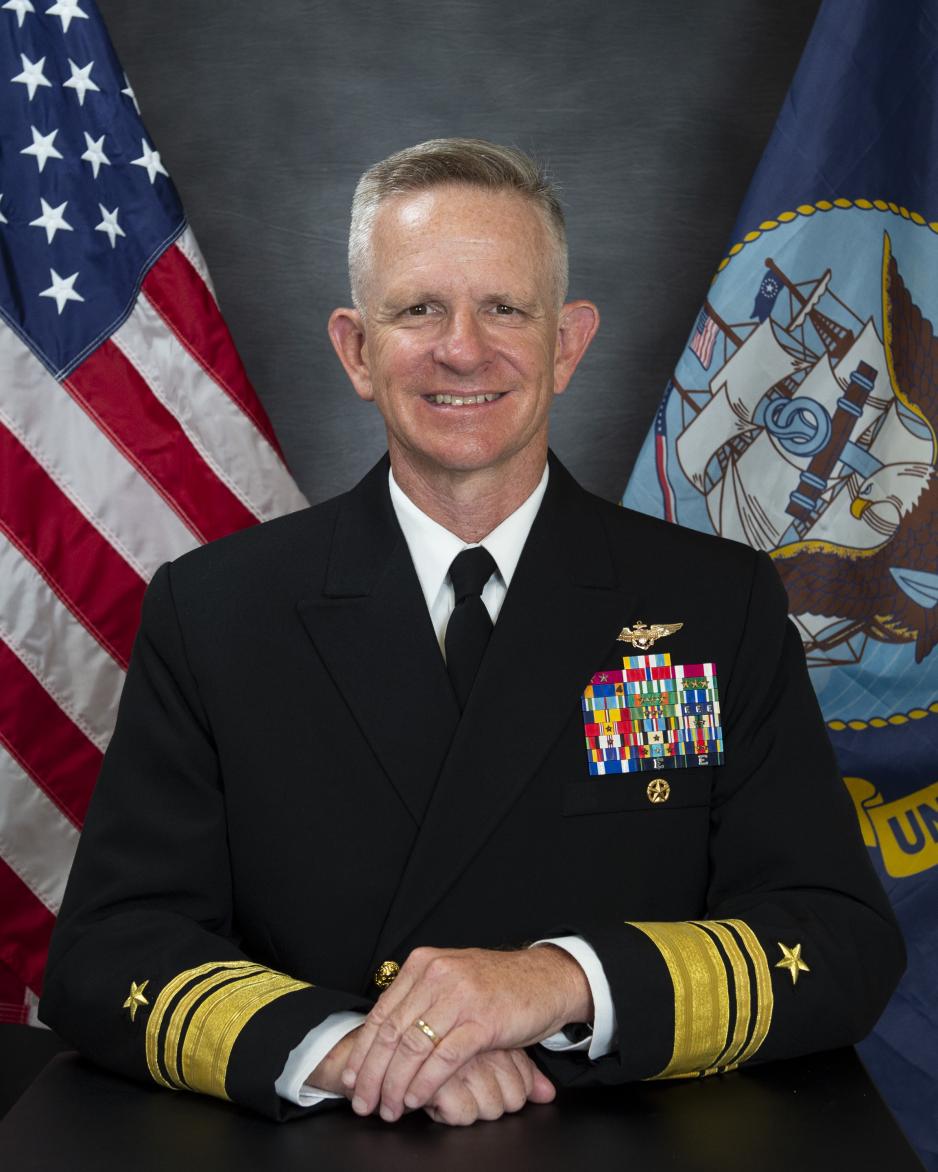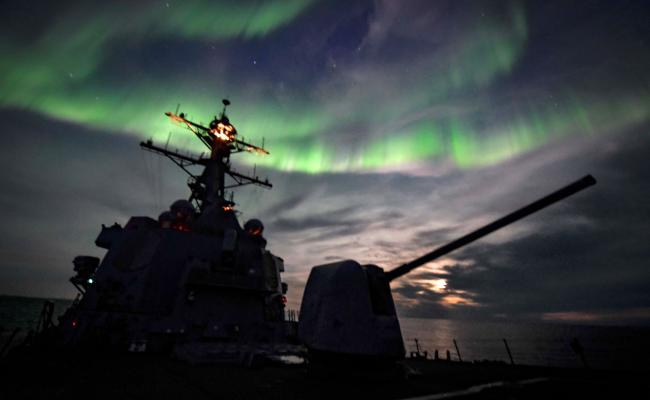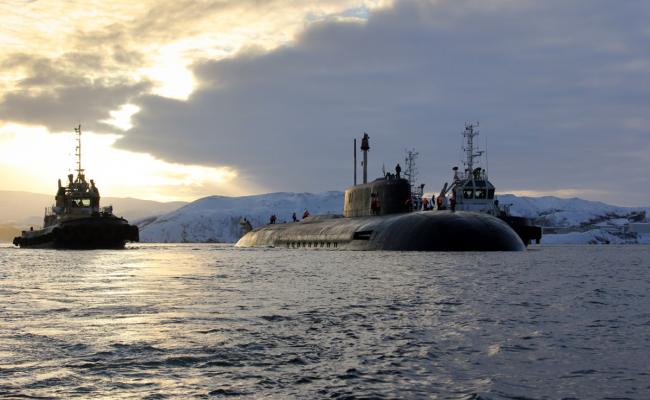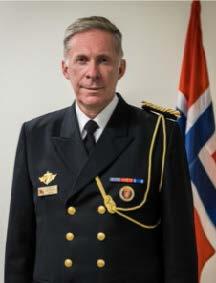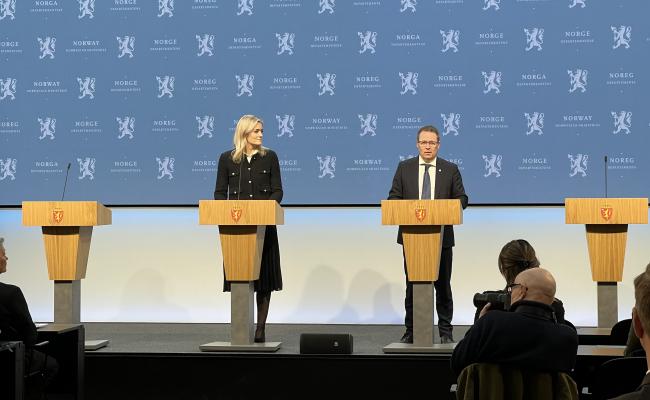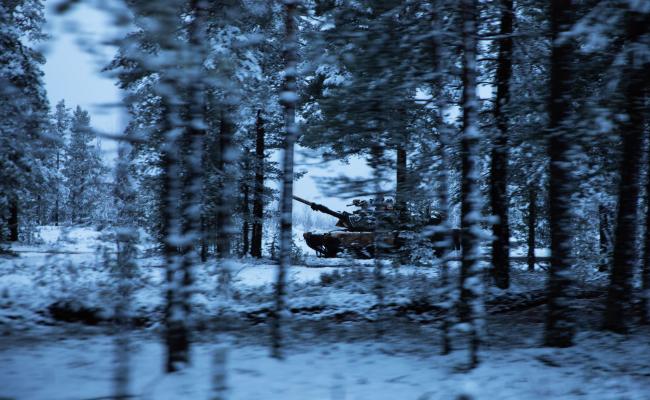Arctic Now Number One Priority for Russia, Norway Looking to Allies for Increased Deterrence
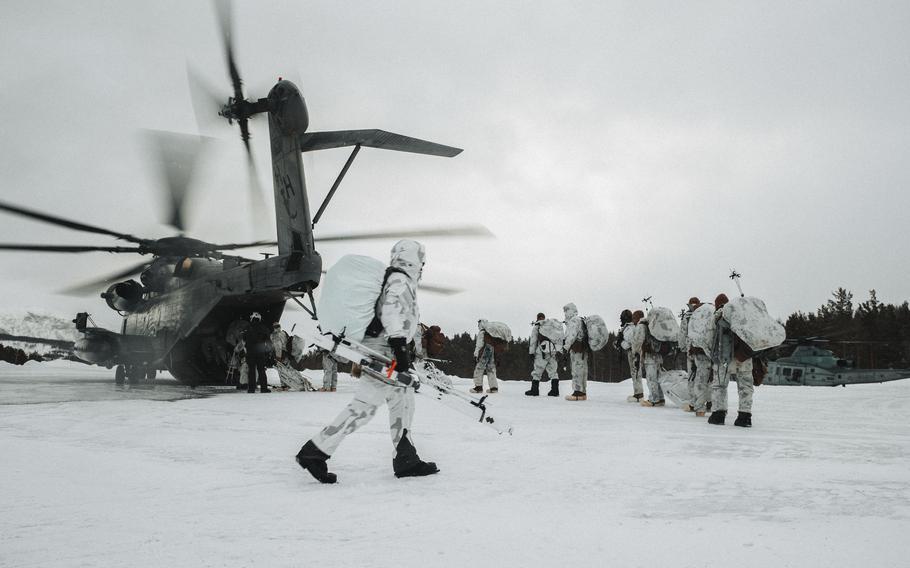
U.S. Marines loading onto a Super Stallion helicopter during a training exercise in Setermoen, Norway in March 20222. (Source: Jacqueline C. Arre/ U.S. Marine Corps)
Military leaders from the U.S. and Norway assessed Russia’s growing interests and offensive posture in the region and discussed how to balance the need for credible deterrence, while also avoiding escalation.
An event focused on how to deter Russia in the High North brought together U.S. and Norwegian armed forces representatives in Washington DC last week. The round-table, organized by the Wilson Center’s Polar Institute focused on Russia’s increasing prioritization of the Arctic region and how the U.S. and its partners, especially Norway, can deter Russian aggression in the region.
“Russia challenges Arctic stability,” said Vice Admiral Dan Dwyer, commander, U.S. Second Fleet.
In July of 2022 Russia released its new Maritime Doctrine prioritizing the Arctic as its most important maritime direction pledging to protect these Waters ‘by all means’. This includes increased attention on the Arctic littoral as well as the introduction of new missile capabilities to focus on its bastion of the Northern Fleet.
Russian shift
Vice Admiral Dwyer heads U.S. Second Fleet, which was re-established in 2018 to counter Russia’s rising influence in the North Atlantic and in the Arctic and to react to heightened tensions between NATO and Russia.
Russia’s priorities recently underwent a shift where the Arctic surpassed the Atlantic as Russia’s key priority.
“Now this is very important: prior to the July 2022 announcement the Arctic was their number three priority where the Atlantic was their number one priority. Now Russia has realized that the Arctic is the key to their economy and to their defense as they see the receding of the Arctic ice,” continued Dwyer.
This shift in priorities has already manifested itself in terms of assets on the ground and increasing exercises he elaborated.
In August 2022 Russia unveiled plans for a new strategic missile carrying submarine cruiser and just one month later it deployed several submarines for an exercise to the Arctic around Umka to showcase their capabilities in the High North.
A lot of firepower in Russian Arctic
A similar sentiment was echoed by U.S. Navy Admiral Daryl Caudle, commander, U.S. Fleet Forces Command.
“Russia dominates the Arctic geography and possesses the corresponding ability to dominate with capability and infrastructure. They do have legitimate sovereign interest and have elevated their Northern Fleet to constitute its own military district. They have the largest Icebreaker fleet, some of which can carry the caliber cruise missile. They have an active defense system that has high readiness and mobility and firepower in the Northern Fleet,” Caudle outlined.
Also read
The country’s anti-access and access denial capabilities extend from the Arctic to the Baltics and the GIUK gap (Greenland-Iceland-UK), he elaborated. Assets include the S-400 missile system, long range precision guided strike weapons, especially focused on and near the Kola Peninsula just kilometers from Norway’s border with Russia.
“So there is a lot of firepower up in that region; the NATO Northern flank with Norway, Sweden, and Finland and partnership capabilities and integration are essential,” said Adm. Daryl Caudle, commander, U.S. Fleet Forces Command.
Deter but avoid escalation
Norway’s enhanced role in containing and deterring Russia was a theme repeated throughout the 3 hour discussion. Captain Egil Vasstrand, Naval and Assistant Defense Attaché of Norwegian Embassy in Washington concurred that Norway’s position neighboring Russia has always been a key factor in shaping its policy of deterrence on one hand and stability on the other.
“Russia is a neighboring country that Norway always will have to relate to when it comes to security. The Norwegian security policy has consisted of a combination of deterrence through the NATO memberships and reassurance through dialogue and self-imposed restrictions. Stability and predictability in the region have been of great importance to Norway.”
While large aspects of the bilateral and international dialogue with Russia are shut down following the full-scale invasion of Ukraine a year ago, Norway continues to maintain a dialogue with Russia where possible, Vasstrand elaborated.
The high North is the number one policy priority for Norway.
“Norway still has a dialogue with Russia in areas that are important for safety and predictability in the region such as fishery management, search and rescue and the incidents at sea agreement.”
Another key tool for stability is the hotline between the Norwegian joint operational headquarters and the Northern Fleet to “avoid unnecessary escalations and misunderstandings.”
However as Russia’s posture in the region becomes more offensive the importance of deterrence will increase.
Strategic importance
“The high North is the number one policy priority for Norway. The region has strategic importance for Norway based on two main factors: the economic potential and the geopolitical location next to Russia. The region has been an area of low tension after the Cold War ended but this has an obvious potential to change to higher attention in the future based on strategic interest and future competition in the High North. The Russian posture has also become more offensive,” elaborated Vasstrand.
The fact that the region is becoming an increasingly important resource base for Russia and the resultant buildup of infrastructure and modernization of its military capabilities go hand in hand.
“The High North is not going to be of less importance for the Russians in the future. It is likely that Russia is willing to use military force if they assess their strategic interest being threatened,” Vasstrand cautioned.
In order to deter Russia and supplement Norway’s limited credible deterrence capabilities, increased allied activity in Norway and in the waters around it will be key. In the spirit of greater cooperation Norway recently implemented a new defense agreement with the U.S.
However, the increase in these activities needs to be measured to avoid escalation, Vasstrand explained.
“The political authorities in Norway are positive to an increased allied activity on Norwegian territory and in the maritime areas in the High North. The question is how we as allies can conduct sufficient deterrence in an efficient way without initiating any serious escalations of the situation in the area.”
“In order to do so we need to understand the region and the Russian objectives and that is not always easy,” he concluded.


